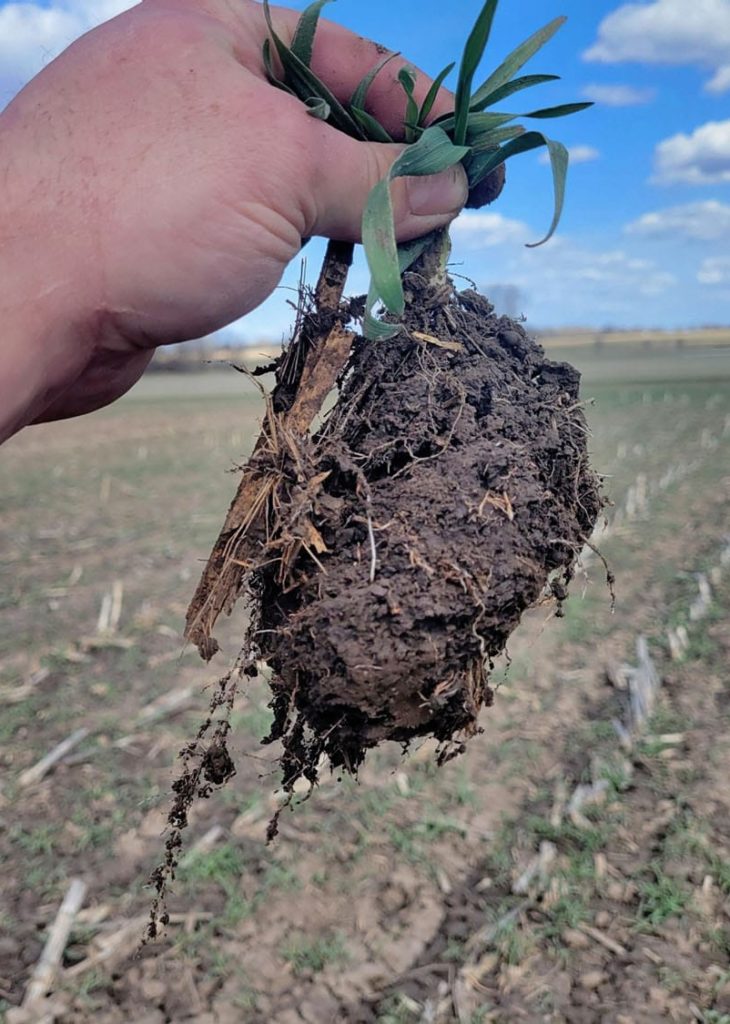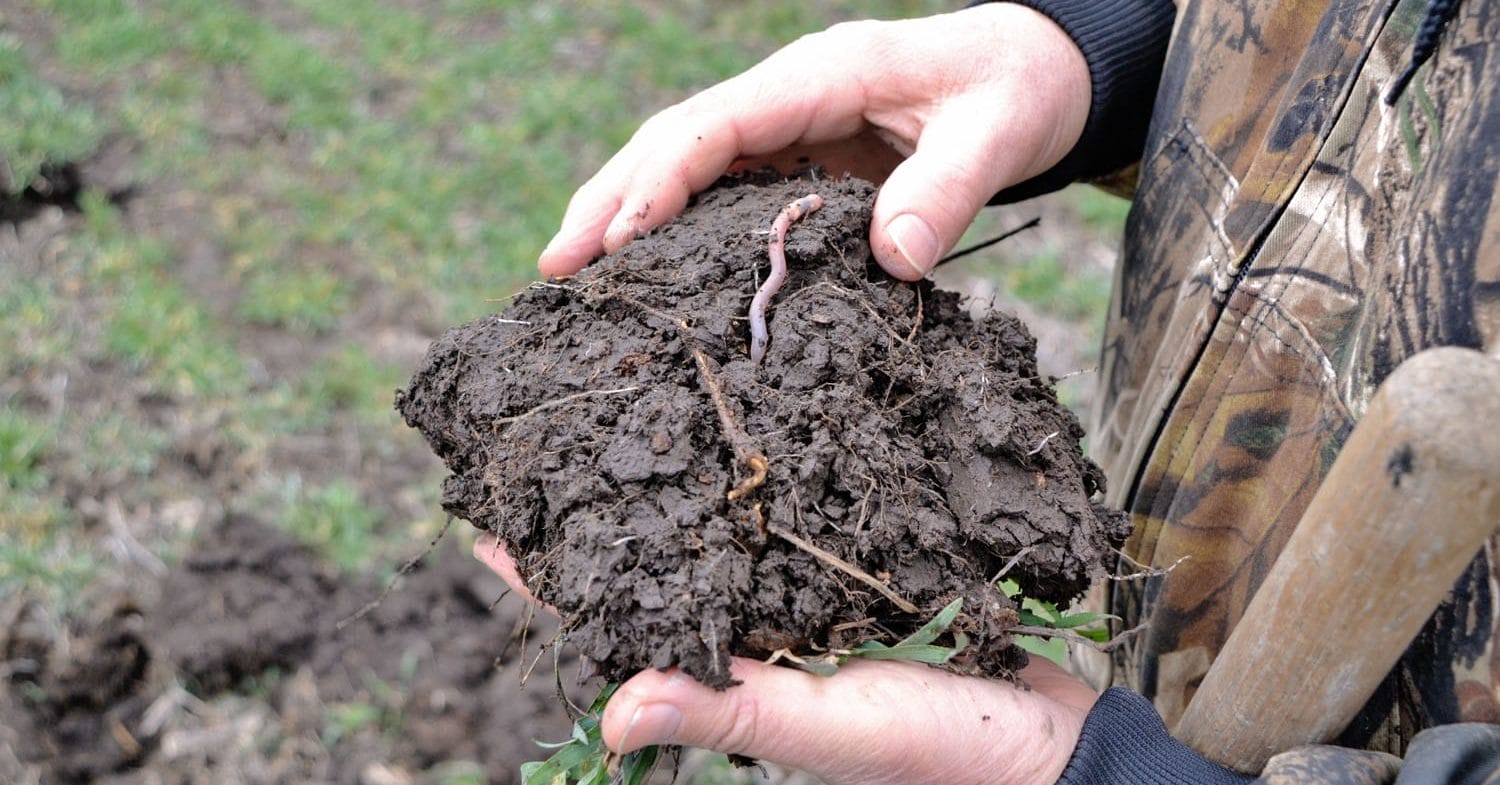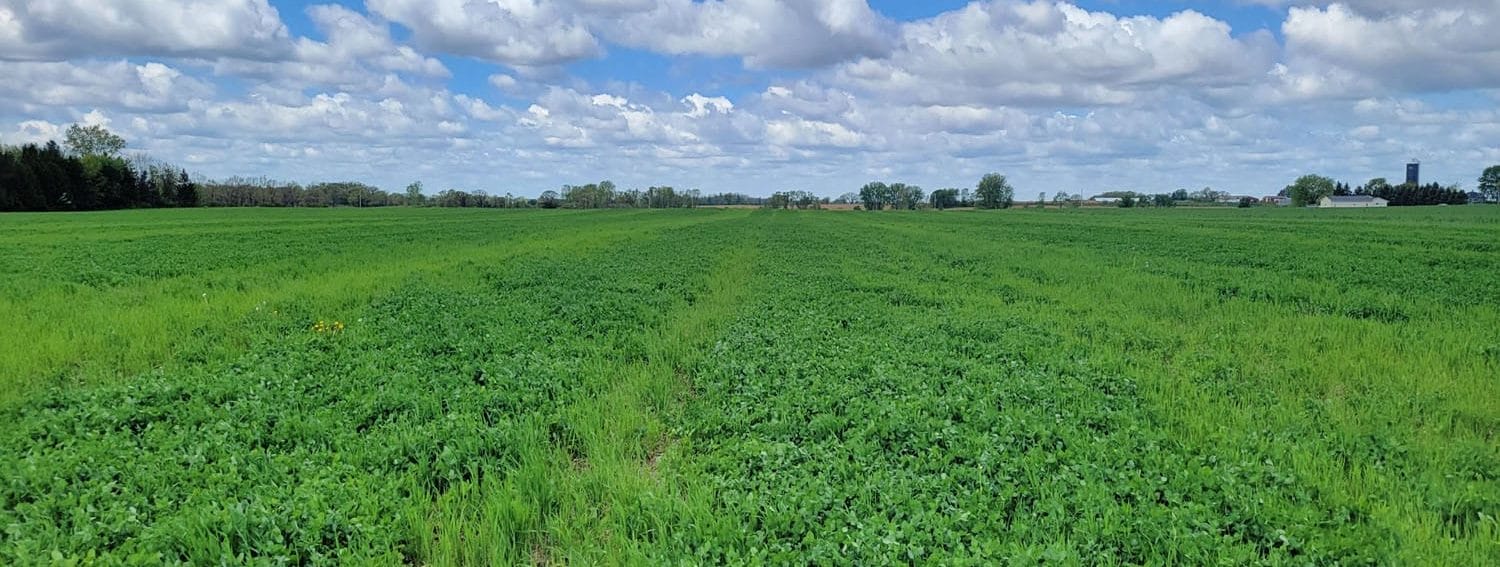The Roots of Nitrogen
From cover crops to cost-share, PFI farmers are working to build soil health and reduce inputs in hopes of stabilizing nutrient cycles – and farm economics
Kevin Veenstra has been farming in central Iowa since 1993. Nearly 20 years ago, he switched to no-tilling his farm acres – something he says made life easier when he also had a factory job. Ten years ago, he left that job to farm full-time, and since then, has focused his energy on planting cover crops in all his fields.
He got started in 2013 when he received funding through the Environmental Quality Incentives Program to plant cover crops on land he farms near Reasnor, Iowa. “The farm is in a watershed, so there was a lot of cost-share available for that. And that’s when I really started doing [cover crops] every acre every year.”
The benefits are not just financial – one clear advantage was on display this spring, when drenching rains soaked much of Iowa in late April and May.
The moisture was much-needed, after multiple seasons of drought. But the rains also turned many bare fields into vast pools of water – reminders of the land’s long-ago wetland disposition. For some farmers, the standing water prevented field access for planting. For others, newly planted seeds were destined to be drowned.
In Kevin’s cover cropped fields, however, the water soaked in more quickly and never gathered into standing ponds. A worm’s-eye view (if worms had eyes) would show why: a tangled web of roots, mycorrhizae, nematodes and other invertebrates moving in a cushion of moist, sponge-like soil. With plenty of open space, water drained more readily while holding some of that hydration for later in the season.
”My fields were definitely muddy. But I could still get out there and leave few tracks,” Kevin says. “I didn’t have any standing pools of water and I think the cover crops helped with that.”
In contrast, a closer look at the soil in fields without cover crops would show a dense crust of particles with no pores for water to drip through. Trapped on the soil surface, the water lingered in fields, providing makeshift marshes for kildeer and migrating ducks. Or it ran off into nearby drainages ditches, taking some of the soil and nutrients along for the ride.
For Kevin, keeping nutrients in his soil – and out of waterways – is another reason for his interest in cover crops. Besides saving money on fertilizer that might get washed away, cover crops can help build the soil’s nitrogen stores – which are important for plant nutrition – while safeguarding the environment.
“If you want to try to build your nitrogen levels up, cover crops are going to help keep them from washing away,” Kevin says.
“The Gulf of Mexico doesn’t want your nitrogen,” he adds, referring to the annual, and growing, “dead zone” off the coasts of Louisiana and Texas that holds too little oxygen to support marine life. Excess nitrogen and phosphorus entering the Gulf trigger algal blooms that snuff out oxygen, forcing some species to flee and killing those that can’t get away.
Kevin’s interest in cover crops, and in being efficient with nitrogen, led him to connect with PFI. He first got involved in 2018 after learning about PFI’s cover crop cost-share program. Soon after, he learned about PFI’s Cooperators’ Program, and that he could be reimbursed for his time to conduct on-farm research.
In 2022, he joined other farmers in a trial exploring the impacts of reducing nitrogen inputs on farms that had been using soil health practices, a project supported by both the Foundation for Food and Agriculture Research and by a Conservation Innovation Grant from the Natural Resources Conservation Service.
“I was putting down 200 pounds of nitrogen fertilizer, but I thought I should be able to cut my inputs back if I was actually capturing some nitrogen with my cover crops,” Kevin says. “So I just started playing with different application methods and amounts.”
As part of the PFI trial, he planted corn in eight 1-acre strips. Half received his normal fertilizer rate, while half received a reduced amount of 50 pounds of nitrogen per acre. “I’ve slowly been working my way back,” he says. “With the help of some test strips, I got my rate down to 160 pounds per acre – and my corn yields were around 220 bushel per acre.”
After a second season participating in the PFI trial, Kevin is pleased with the progress on his farm. But he advises other farmers thinking of reducing their nitrogen rates to first work on building soil health.
“From my experience, you would want to be no-tilling and doing cover crops for at least five years before even thinking about experimenting with reducing nitrogen inputs,” he says. “You need to get your soil health to where it needs to be so that the biology can do its thing.”
So how do soil-health practices truly function to help limit nutrient loss? Steven Hall, assistant professor and extension specialist in the Department of Plant and Agroecosystem Sciences at University of Wisconsin-Madison, has spent many years exploring how management practices affect soil chemistry and the flow of nutrients.
“It’s long been assumed that diversified rotations can help store additional carbon in organic matter,” Steven says. “At the same time, we know anecdotally and through [research-based] evidence that those rotations can also supply nitrogen, but those two parts hadn’t necessarily been well linked before.”
While studying carbon cycling, Steven was intrigued to find no significant increase in soil organic carbon when farmers used three- or four-year rotations. He did, however, find that nitrogen mineralization – the process by which microbes convert organic nitrogen in the soil to plant-available forms – significantly improved in the extended rotations. More nitrogen in the soil means less need for synthetic nitrogen.
“Looking at soil carbon, these diversified rotations wouldn’t necessarily be eligible for any kind of [carbon] credits,” Steven says, referring to programs that pay farmers for practices that capture carbon in the soil. “But we can see they [diversified rotations] have tremendous environmental and water quality benefits when we look at the ability to decrease inputs of synthetic nitrogen and herbicides.”
Steven hopes his research will help farmers make more informed decisions for their farms, but he also seeks to learn from their contexts.
“We have a tremendous opportunity for researchers to work with farmers to jointly improve our knowledge,” he says. “Ideally, it’s a circular relationship where farmers tell us what’s feasible or interesting to them and we can try to evaluate what’s happening in these systems and bring it back to the farmers for the next step. That’s where partnerships like PFI can be really useful.”
Empowering farmers to test lower nitrogen rates through on-farm research is one way PFI supports farmers looking to reduce their nitrogen inputs. Another way is through its small grains cost-share.
To help farmers improve the health of their fields, Practical Farmers offers $20 per acre for growing a cover crop containing a legume, planted either at the same time as or following a small-grain crop. Farmers enrolled in this program can add on another cost-share option and receive an additional $20 per acre on fields where they reduce nitrogen rates on corn that follows their small grain-legume cover in rotation.
Wisconsin farmer Josh Hiemstra learned about Practical Farmers through his county agronomist, who shared information with him about the small grains cost-share. Already looking to reduce his inputs, he jumped at the chance to apply for the program and tack on the fertilizer reduction option.
“I don’t want anything that I’m applying or using on my farm to leave,” he says. “That’s better for the environment, and it’s good for my bottom line because it’s efficient.”
Josh is now in his third season taking part in PFI’s cost-share, and he has started to see some changes. “You have to trust that even when putting less fertilizer on, you will maintain the same level of yield and profit,” he says. “It’s very gratifying. But getting to that stage doesn’t happen overnight.”
Josh credits his diversified rotations – which include small grains like winter wheat, rye and triticale, and an array of cover crops – for making his input reduction possible.

The soil in Josh’s cover cropped fields retained moisture through the winter despite below average precipitation.
“The most important thing to do is plant cover crops,” Josh says. “Everything I plant that’s not small grains for harvesting is followed by winter rye or winter triticale in the fall to help prevent nitrates from leaching.” The presence of living roots in the soil retains moisture that would otherwise slip down into groundwater, taking many important nutrients along with it.
Josh is grateful for what he’s gained by participating in the cost-share. The program helps protect his bottom line, he says. But it also provides access to all the other benefits included with a PFI membership – like easy access to an abundance of resources and the opportunity to connect with a like-minded community of farmers.
“There’s nothing that convinces other farmers to try something different than hearing it from others that have been in their shoes and done it themselves,” Josh says.
As word spreads about the benefits of cover crops, extended rotations and reduced tillage, he and others investing in these practices hope more farmers will see the benefits: fewer ponds in fields after spring rains, greener fields, less erosion, more trafficable fields year-round. When we get there, a bird’s-eye view will show a vibrant, quilted landscape of resilient farms – with plenty of worms for them to feast on.


